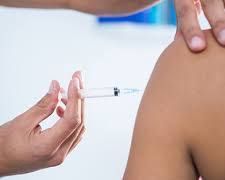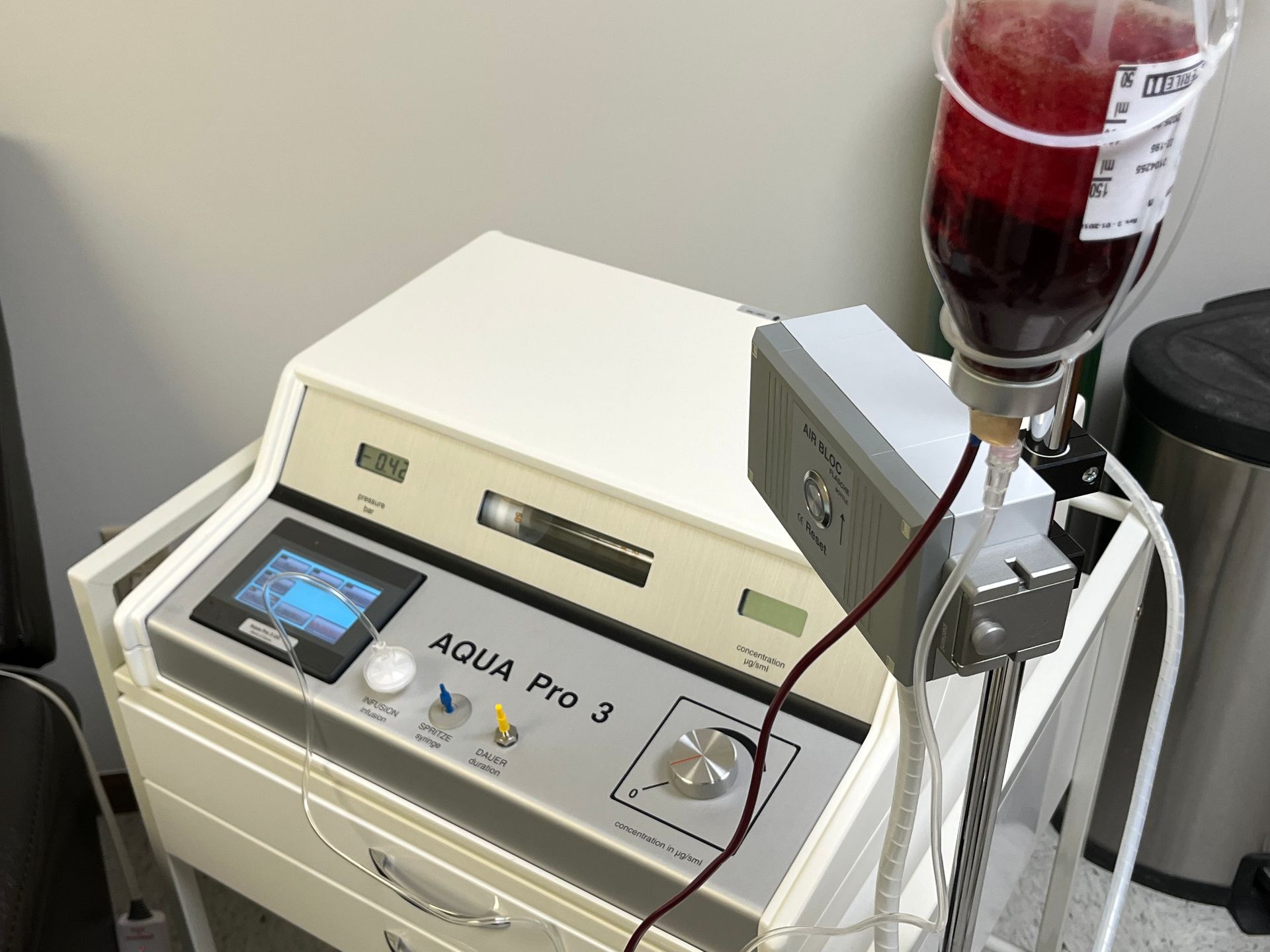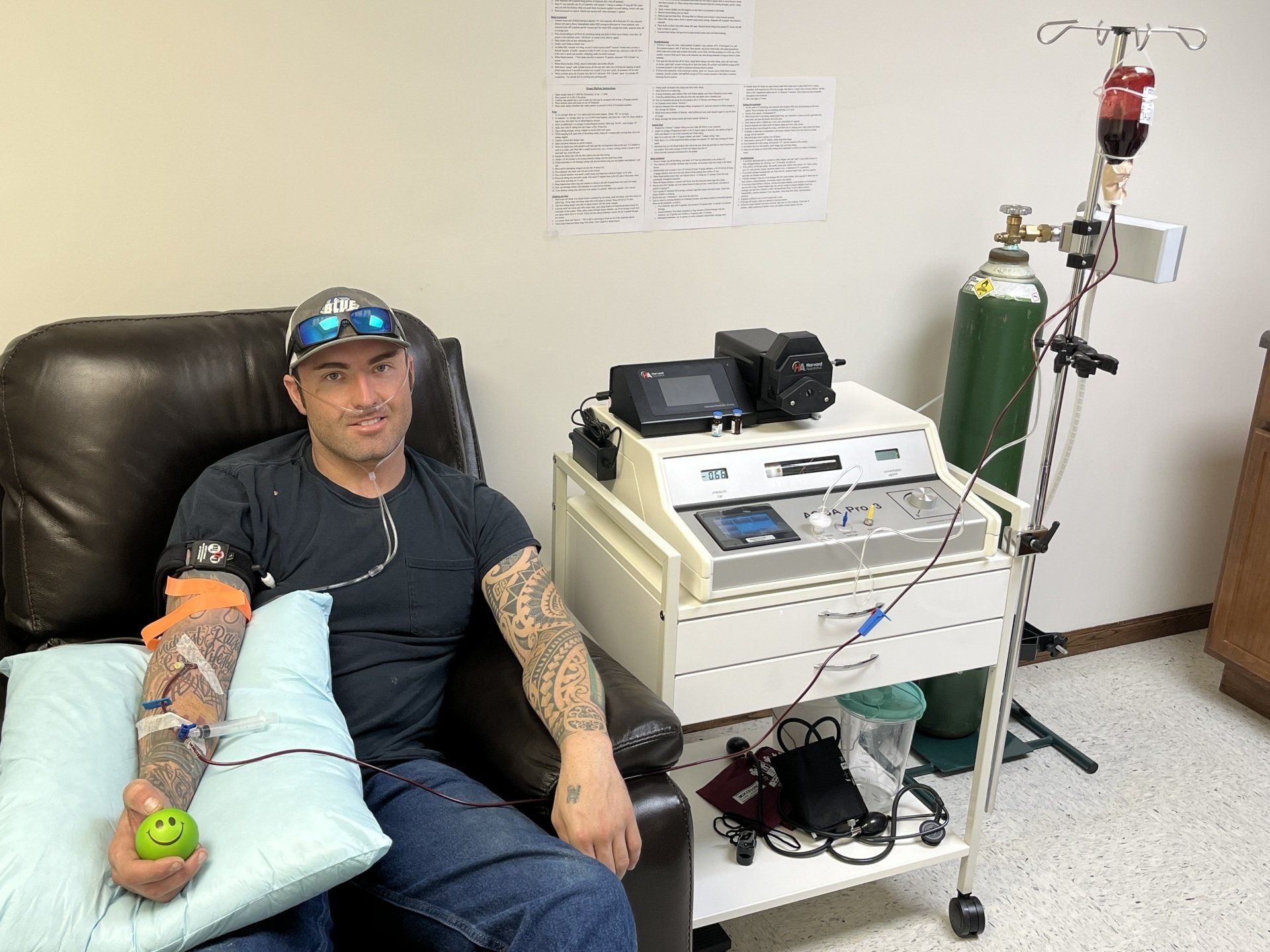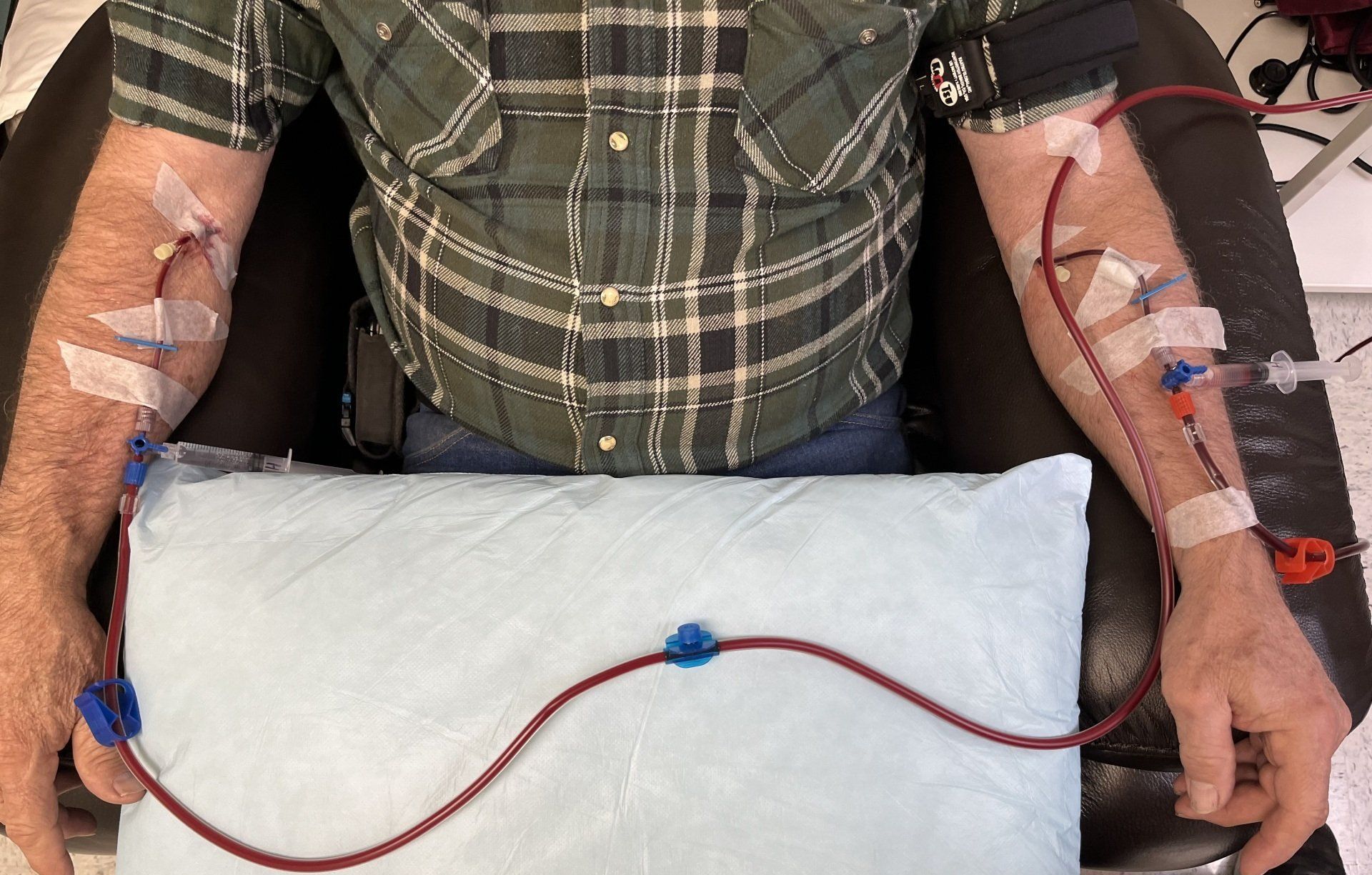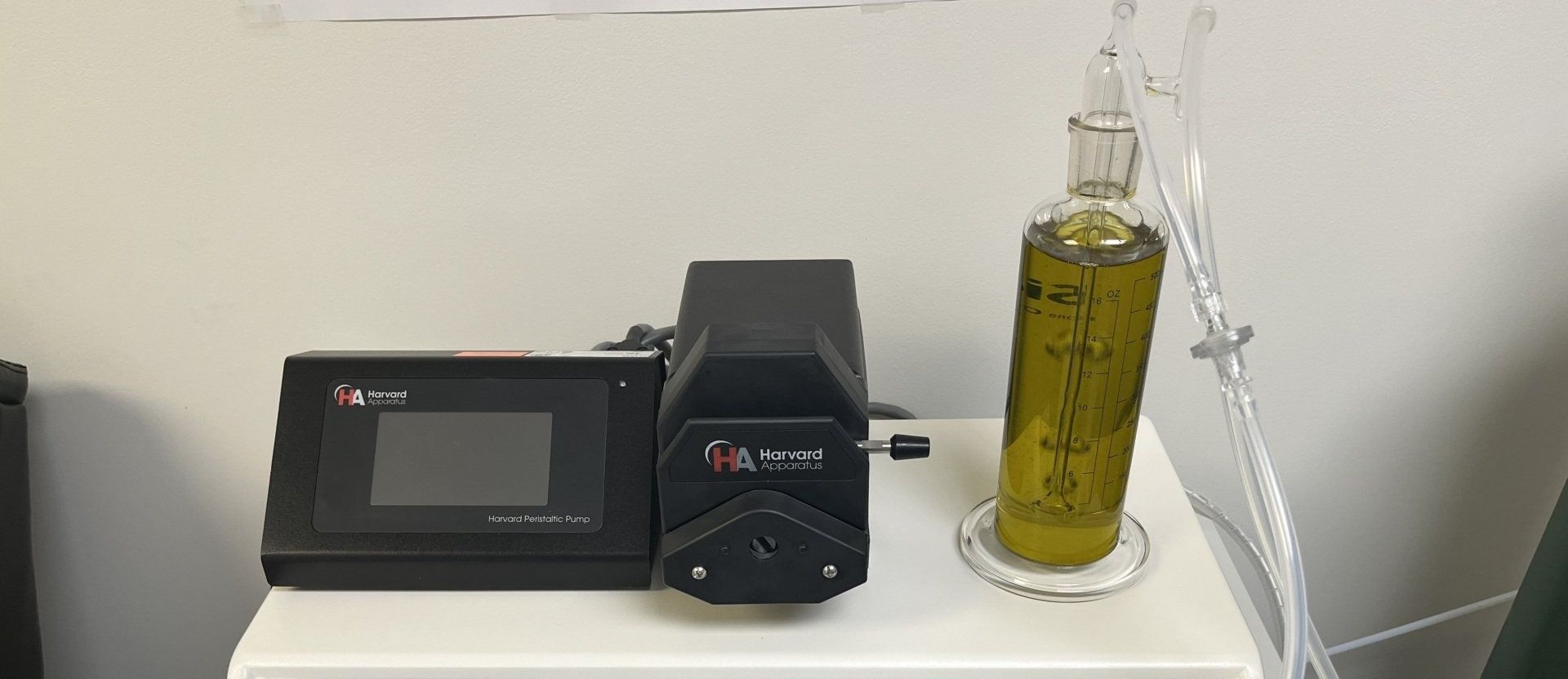Health Educational Blog
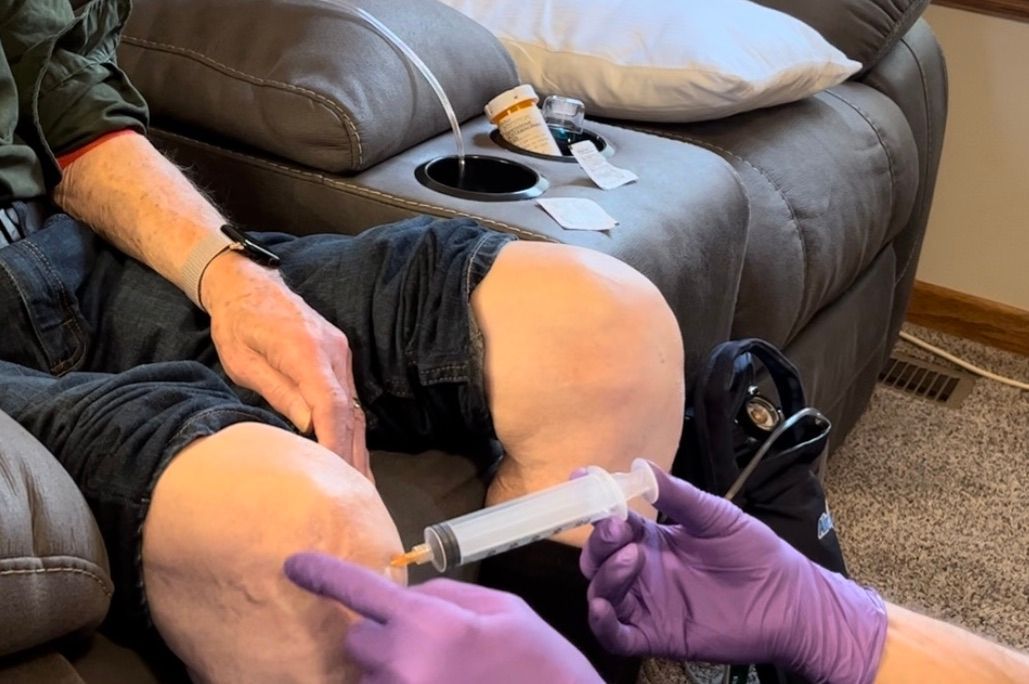
Platelet-Rich Plasma (PRP) therapy has become a revolutionary treatment for individuals seeking faster healing without invasive surgery. Whether you are dealing with chronic joint pain, a sports injury, or tendon inflammation, PRP injections offer a natural way to promote tissue regeneration using your own blood. Yet one of the most common concerns patients have after treatment is simple but important: how soon can you walk after a PRP injection? Understanding the healing process and what to expect during recovery can make a significant difference in your results and comfort. Understanding PRP and Its Healing Process To understand how quickly you can walk after PRP therapy , it helps to know how the treatment works. Platelet-Rich Plasma is created by drawing a small amount of your blood, spinning it in a centrifuge to separate the platelets, and concentrating them into a healing solution. These platelets are rich in growth factors, which act as messengers that trigger the body’s natural repair mechanisms. When injected into damaged tissues or joints, they stimulate cell regeneration, collagen production, and inflammation control, helping to heal the injury from within rather than just masking symptoms. This regenerative process is gradual. PRP doesn’t work overnight; instead, it strengthens tissues over several weeks as new cells form. Because it is a natural treatment, your recovery time and ability to walk afterward depend on several individual factors such as the treated area, injury severity, and your overall health. The First 48 Hours After the Injection Immediately after a PRP injection, you may feel some soreness, swelling, or stiffness around the treated area. This initial discomfort is completely normal and actually signals that the body is responding to the treatment. In these first one to two days, it’s best to minimize physical activity as much as possible. Walking short distances—like moving around your home—is typically fine but avoid overexertion or placing unnecessary stress on the joint. If your PRP treatment was in a weight-bearing joint like the knee, hip, or ankle, you should be extra cautious. Many doctors recommend using supportive aids such as a brace or crutches for the first day or two, not because you are unable to walk, but to allow the injected platelets to settle and begin the repair process without disruption. This stage is all about giving your body the chance to start healing effectively. Resuming Walking and Normal Movement After the initial 48 hours, most patients can start walking lightly again. This doesn’t mean long walks or exercise; rather, it refers to gentle movement that keeps the joint flexible without causing pain. For many people, light walking within two to three days is perfectly safe. The key is to listen to your body. If you experience discomfort or swelling, it’s best to pause and rest. Over the next week, you’ll likely notice a gradual reduction in soreness and increased mobility. While the improvement can feel encouraging, it’s important to remember that PRP continues working beneath the surface for several weeks. The healing and tissue regeneration process takes time, and overexerting yourself too soon could delay or undo the benefits of the injection. Physical Activity and Long-Term Recovery Every individual’s healing timeline is unique, but there are some general patterns that most patients experience. The first few days focus on rest and limited walking. By the end of the first week, light movement feels easier, and moderate walking or low-impact activity may be reintroduced with your doctor’s approval. Around two to three weeks post-treatment, you might notice noticeable improvements in flexibility, strength, and comfort. During this time, it’s important to avoid running, jumping, or strenuous exercise. These activities can stress the healing tissue and interfere with regeneration. Instead, gentle motion and physical therapy, if prescribed, should guide your recovery. By the fourth week or later, depending on your doctor’s recommendations, you may slowly return to more demanding physical activities. Remember, PRP is designed to stimulate long-term repair, so steady progress is far more effective than pushing for immediate results. The most successful recoveries come from patience and consistency. Maintaining proper hydration, following a balanced diet, and avoiding anti-inflammatory medications unless prescribed can all support the healing process. PRP thrives in an environment where the body’s natural responses are allowed to work without interference. Individual Factors That Affect Walking After PRP The speed of your recovery largely depends on a few personal variables. The injection site is one of the most significant factors. Treatments in smaller joints or tendons, such as the elbow or shoulder, often allow for faster mobility compared to weight-bearing joints like the knees or hips. The severity of the condition also plays a role. Someone receiving PRP for mild tendonitis will typically walk sooner than someone recovering from a more advanced joint issue or ligament damage. Your overall health and activity level can impact how quickly you heal as well. People who maintain good fitness, nutrition, and circulation often experience faster recovery responses. Conversely, conditions like diabetes, obesity, or poor circulation may slow the healing process. Another crucial factor is how closely you follow aftercare instructions. Doctors usually provide clear guidance about resting, icing, avoiding certain medications, and gradually reintroducing activity. Following these recommendations precisely helps maximize the treatment’s effectiveness. Ultimately, PRP therapy is a partnership between medical science and your body’s own biology. The more you support that natural process through proper rest and movement, the better your outcome will be. So, how soon can you walk after a PRP injection? In most situations, patients can begin light walking within a few days, with full recovery developing gradually over the following weeks. The purpose of PRP therapy isn’t just quick relief; it’s about long-term healing and the restoration of natural mobility. At One Natural Health , we believe that recovery should focus on the body’s own ability to regenerate, and PRP is a powerful way to support that process. By being patient, following your aftercare plan, and giving your body time to heal, you’ll soon regain the strength and comfort needed to move confidently again.
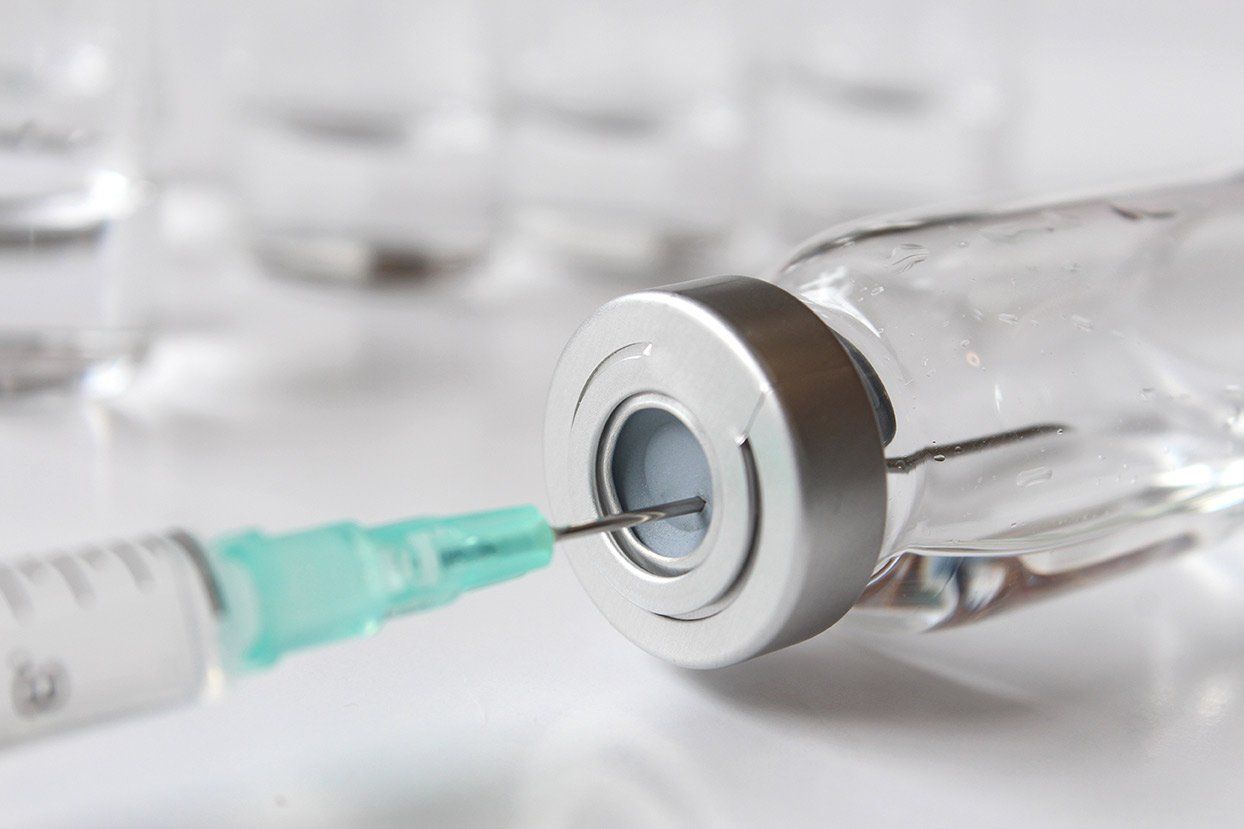
Platelet-Rich Plasma (PRP) therapy has become one of the most sought-after regenerative treatments for individuals looking to restore hair, rejuvenate skin, or heal injuries naturally. The main attraction of PRP is its use of the body’s own platelets to stimulate repair and regeneration. However, one of the most common questions people have before undergoing PRP treatment is simple: how long does PRP last? The answer depends on a variety of factors, including the treatment area, frequency of sessions, and individual biology. Let’s dive deeper into understanding how PRP works, how long it lasts, and what you can do to maximize its effects. Understanding How PRP Works To understand how long PRP lasts, it’s important first to understand what PRP therapy does. PRP involves drawing a small sample of your blood and spinning it in a centrifuge to separate the platelet-rich plasma from other components. These platelets are rich in growth factors that stimulate tissue repair and cell regeneration. When injected back into the targeted area, PRP helps accelerate healing, enhance collagen production, and restore vitality to the skin, scalp, or joints. The science behind PRP lies in its ability to signal your body’s natural healing mechanisms. For instance, in hair restoration, PRP promotes new hair growth by awakening dormant follicles. In orthopedic treatments, it reduces inflammation and aids in tissue repair. The overall effect is gradual but powerful. Your body rejuvenates itself over time, leading to long-lasting benefits that are completely natural. How Long Does PRP Last for Hair Restoration? When it comes to PRP for hair restoration, patients typically begin to see noticeable results within three to six months after the initial sessions. Most treatment plans start with a series of three to four sessions spaced about a month apart. Once the initial series is complete, maintenance treatments every six to twelve months help sustain the results. In terms of longevity, PRP for hair growth can last up to 18 months with proper maintenance. However, factors such as genetics, hormonal changes, and overall health can influence how long the effects persist. The follicles that are reactivated continue to produce hair for as long as they remain healthy, which is why regular follow-up treatments help reinforce the stimulation process. The key takeaway is consistency. Just like skincare or fitness, PRP results thrive with ongoing care. Many patients find that once they achieve their desired density, a yearly touch-up session keeps their hair thicker, stronger, and fuller for years to come. PRP for Skin Rejuvenation: Duration and Maintenance For facial rejuvenation, PRP helps improve skin texture, tone, and elasticity by encouraging collagen and elastin production. After a PRP facial, patients usually notice an improvement in glow and smoothness within a few weeks. The collagen-building process, however, continues beneath the surface for several months. Typically, PRP facial results last 12 to 18 months, depending on factors like sun exposure, skincare habits, and overall health. The treatment is often performed in a series of three sessions spaced about a month apart, followed by maintenance once or twice a year. The longevity of PRP skin treatments largely depends on how well you care for your skin afterward. Avoiding excessive sun exposure, maintaining hydration, and using gentle, nourishing skincare products can dramatically extend the effects. Over time, you’ll notice your skin looking naturally refreshed, smoother, and more radiant without the need for fillers or synthetic interventions. PRP for Joint and Injury Healing: Long-Term Relief When used for joint injuries or chronic pain, PRP can provide relief that lasts significantly longer than traditional corticosteroid injections. Patients suffering from conditions like tendonitis, arthritis, or ligament injuries often experience pain reduction and improved mobility within a few weeks after treatment. The results of PRP for orthopedic use can last anywhere from six months to two years, depending on the severity of the injury and the individual’s healing response. Unlike medications that temporarily mask pain, PRP promotes actual tissue repair. This means the benefits can continue even after the initial relief phase. Many athletes and physically active individuals choose PRP because it’s a natural and long-term solution without the side effects of invasive surgery. The regenerative process strengthens tissues over time, making it a valuable option for those seeking sustainable healing. What Influences How Long PRP Lasts? While PRP offers incredible longevity compared to many other treatments, the duration of its effects varies from person to person. Several factors influence how long PRP lasts, including age, lifestyle, nutrition, and overall health. Younger individuals or those with a healthy lifestyle tend to respond better and retain results longer because their cells are more responsive to regenerative stimuli. Lifestyle habits play a huge role as well. Smoking, excessive alcohol consumption, stress, and lack of sleep can slow down the body’s healing process and diminish PRP’s effectiveness. On the other hand, maintaining a balanced diet rich in vitamins, antioxidants, and proteins can enhance the treatment’s longevity. Additionally, the skill and experience of the practitioner performing the treatment are crucial. A precise injection technique ensures that the platelet concentration is delivered exactly where it’s needed most. Choosing a reputable clinic that specializes in PRP therapy increases the likelihood of long-lasting and noticeable results. How to Make Your PRP Results Last Longer To prolong the effects of PRP, it’s essential to follow your practitioner’s post-treatment care instructions closely. For hair PRP, avoid harsh shampoos and minimize scalp irritation in the days following treatment. For facial PRP, avoid heavy makeup, direct sunlight, and strenuous exercise for at least 24 to 48 hours. Hydration also plays a key role. Drinking plenty of water helps maintain cellular function, while a nutrient-rich diet supports tissue repair. Regular maintenance sessions every six to twelve months can keep the regenerative process active and ensure that your results stay fresh. Many patients pair PRP with complementary treatments such as microneedling, laser therapy, or stem cell therapy for even greater longevity. These combinations can amplify collagen production and accelerate healing, leading to more dramatic, longer-lasting outcomes. So, how long does PRP last? On average, you can expect results to last between 12 and 24 months, depending on the treatment area and your body’s response. Hair restoration typically lasts up to 18 months, facial rejuvenation takes around 12 to 18 months, and joint or tissue healing can take up to two years. While the effects of PRP are not permanent, they are long-lasting and completely natural. With proper maintenance, a healthy lifestyle, and periodic follow-up treatments, PRP can deliver ongoing rejuvenation and vitality for years. At One Natural Health , we believe in harnessing the body’s natural power to heal and regenerate. Our PRP treatments are designed to deliver long-term, sustainable results so you can look and feel your best from the inside out.

Regenerative medicine has become one of the most talked-about areas in modern healthcare. People living with chronic pain, injuries, or degenerative conditions are searching for alternatives that go beyond prescription medications or invasive surgery. Two of the most widely discussed treatments are stem cell therapy and platelet-rich plasma therapy, also known as PRP. At first glance, they may appear similar because both are designed to use the body’s own healing ability, but they are not the same. Understanding the differences is essential for patients considering regenerative options. What PRP Therapy Involves Platelet-rich plasma therapy is a process that begins with a simple blood draw from the patient. The blood is placed into a centrifuge, which spins at high speeds to separate its components. The plasma portion, rich in platelets and growth factors, is then injected into an area of injury or degeneration. The goal is to stimulate repair, reduce inflammation, and encourage tissue healing by using natural components already present in the blood. Because PRP is created from the patient’s own body, it is considered minimally invasive and carries very little risk. This approach has gained widespread popularity in sports medicine and orthopedics, helping athletes and active individuals recover from tendon injuries, joint pain, and ligament sprains. What Sets Stem Cell Therapy Apart Stem cell therapy is different because it does not simply signal the body to heal but introduces actual regenerative cells capable of transforming into new types of tissue. Stem cells are unique in that they can develop into cartilage, bone, muscle, or tendon, depending on where they are placed. They are commonly harvested from bone marrow, fat tissue, or umbilical cord tissue. Once processed, they are carefully injected into the site of injury or degeneration. This makes stem cell therapy more advanced because it not only enhances existing healing but also actively works to rebuild and replace what has been lost. How PRP and Stem Cells Work in the Body The biological action of PRP lies in its ability to release growth factors that stimulate cells already present in the body to begin the repair process. It is like sending out a powerful message that calls the body’s natural resources into action. Stem cells go a step further by being the resources themselves. They are raw materials that can transform into new tissue, providing structural repair when the damage is extensive. For individuals with mild inflammation or early signs of arthritis, PRP may be effective enough to reduce pain and restore function. In contrast, patients with severe degeneration may benefit more from the regenerative capacity of stem cell therapy. Conditions Best Suited for PRP PRP therapy has become a go-to option for conditions that require quick healing without major intervention. It is commonly used for mild to moderate osteoarthritis, tendon irritation such as tennis elbow, ligament sprains, and muscle strains. In recent years, dermatologists and cosmetic specialists have also incorporated PRP into treatments for hair loss and facial rejuvenation, further demonstrating its versatility. The appeal of PRP lies in its simplicity and its ability to stimulate healing using the patient’s own blood in a procedure that often takes less than an hour. Conditions Best Suited for Stem Cell Therapy Stem cell therapy is usually considered for more serious or advanced issues. Patients who have severe arthritis, degenerative disc disease, or significant cartilage loss may be advised to consider stem cells. Chronic ligament injuries that have not responded to other treatments are also common candidates. In some cases, experimental protocols explore the use of stem cells for autoimmune or neurological disorders, though much of that research is still in progress. Stem cell therapy is about rebuilding rather than just repairing, making it an option when the damage is beyond what PRP can reasonably stimulate. Effectiveness of Both Therapies Clinical studies have shown PRP to be highly effective in reducing inflammation and pain in cases of early arthritis and soft tissue injuries. Patients often experience faster recovery and an improved ability to resume normal activities. Stem cell therapy, on the other hand, shows greater promise in regenerating cartilage and repairing tissues at a deeper level. Results may take longer to appear because tissue regeneration is a slower process, but the potential for long-term improvement is greater. Neither therapy is a universal cure, and outcomes depend heavily on factors such as age, overall health, lifestyle, and the severity of the condition being treated. Safety Considerations Safety is an important concern for patients. PRP is generally considered very safe because it comes from the patient’s own blood, leaving little risk of rejection or allergic reaction. Side effects are usually limited to temporary soreness or swelling at the injection site. Stem cell therapy is also regarded as safe when performed under proper medical standards, but it is a more complex procedure. Risks may be slightly higher if donor cells are used or if the cells are manipulated in a laboratory before being reintroduced. For both treatments, patients should seek providers who adhere to strict safety guidelines and operate within recognized medical regulations. Cost Differences Between PRP and Stem Cells One of the most noticeable differences between the two therapies is cost. PRP therapy is relatively affordable because the procedure involves drawing blood and processing it with a centrifuge, which makes it accessible to a wide range of patients. Stem cell therapy is significantly more expensive due to the collection, processing, and sometimes laboratory preparation of the cells. While PRP sessions may cost several hundred dollars, stem cell treatments can cost thousands, depending on the complexity and the area being treated. For some patients, it makes sense to begin with PRP before investing in stem cells, especially if the condition is not severe. Choosing Between PRP and Stem Cell Therapy Deciding between PRP and stem cells often depends on the severity of the condition, the patient’s long-term goals, and financial considerations. For minor injuries, mild arthritis, or early tissue damage, PRP can be an effective and natural solution. For patients with advanced degenerative conditions or chronic pain that has not responded to other treatments, stem cell therapy may provide the deeper regeneration that is needed. A consultation with a regenerative medicine specialist is the best way to evaluate which therapy aligns with both the patient’s condition and their expectations. The Future of Regenerative Medicine Research continues to explore both PRP and stem cell therapy, with exciting advances on the horizon. Some studies are examining the combination of the two treatments, utilizing PRP to stimulate and enhance the performance of stem cells after injection. Early results suggest that this approach may offer even better outcomes. As technology advances and costs decrease, both therapies are expected to become more accessible to the general population. This ongoing innovation is shaping the future of medicine, providing alternatives that rely on the body’s natural healing capacity rather than invasive procedures. Stem cell therapy and PRP both belong to the field of regenerative medicine, yet they are not identical treatments. PRP relies on the healing power of platelets to stimulate repair and reduce inflammation, making it an effective choice for early injuries or mild arthritis. Stem cells, with their ability to transform into entirely new tissue, offer a deeper level of regeneration that is often more suitable for advanced or chronic conditions. Choosing between them depends on the extent of damage, desired outcomes, and individual health goals. At One Natural Health , we believe that understanding these differences empowers patients to make informed decisions and explore therapies that restore balance, reduce pain, and enhance long-term quality of life.
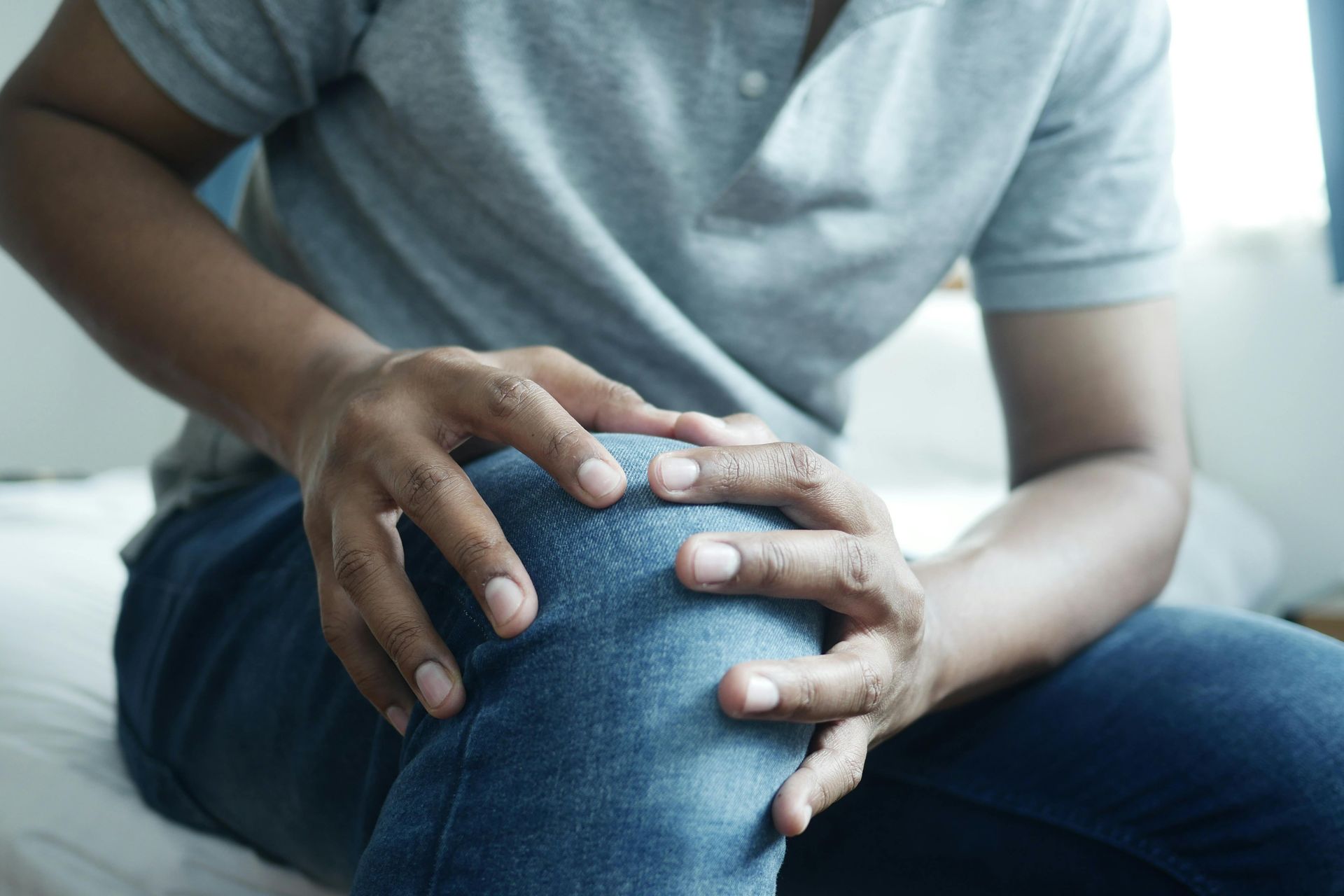
Arthritis is one of the most common chronic conditions, affecting millions of people worldwide. Characterized by joint pain, stiffness, and reduced mobility, it can severely impact quality of life. While traditional treatments, such as medications, physical therapy, and, in severe cases, surgery, have long been the go-to solutions, recent years have seen a rise in interest in regenerative therapies. One of the most talked-about options is platelet-rich plasma (PRP) therapy. But can PRP help arthritis, or is it just another medical trend? Let’s take a closer look at how PRP works, what research says, and whether it’s a viable option for managing arthritis. Understanding Arthritis and Its Challenges Arthritis is not a single condition, but rather an umbrella term for more than 100 disorders that affect the joints. The two most common types are osteoarthritis, which is caused by the breakdown of cartilage over time, and rheumatoid arthritis, an autoimmune condition where the immune system attacks the joints. Both forms lead to pain, inflammation, and gradual loss of joint function. The challenge with arthritis is that most treatments focus on symptom management rather than reversing the underlying damage. Pain relievers, anti-inflammatory drugs, and steroid injections can provide temporary relief, but they do little to restore joint health. This has created a demand for therapies that go beyond surface-level treatment and target tissue repair at its core. What Is PRP Therapy? PRP therapy involves using a patient’s own blood to harness the natural healing power of platelets. A small sample of blood is drawn and then spun in a centrifuge to separate the components. This process concentrates platelets, which are rich in growth factors that stimulate cell repair and regeneration. The platelet-rich plasma is then injected into the affected joint to reduce inflammation and promote healing. Since PRP is derived from the patient’s own body, the risk of rejection or allergic reaction is minimal. This makes it appealing for those seeking more natural alternatives to conventional treatments. Why PRP Has Gained Popularity in Orthopedics Over the past decade, PRP has become widely used in sports medicine and orthopedics for treating tendon injuries, ligament sprains, and muscle damage. High-profile athletes have publicly credited PRP for faster recoveries, sparking mainstream curiosity. With this growing reputation, researchers and clinicians began to explore whether PRP might also benefit patients with chronic joint conditions like arthritis. The Science Behind PRP for Arthritis When PRP is injected into an arthritic joint, the growth factors released by platelets are believed to stimulate cartilage cells, encourage collagen production, and reduce inflammation. This theoretically creates an environment where tissue repair can take place, slowing down the degenerative process. Studies have shown that PRP may improve joint lubrication, which can ease stiffness and make movement less painful. There is also evidence that it reduces the inflammatory chemicals that worsen arthritis symptoms. Comparing PRP to Other Injections Traditionally, patients with arthritis are offered corticosteroid injections or hyaluronic acid injections. Steroids can provide quick pain relief but may cause cartilage damage if overused. Hyaluronic acid, often referred to as “gel shots,” aims to restore joint lubrication, but results can be inconsistent. PRP is unique because it is not just masking pain but actively encouraging the body to heal. Patients who do not respond well to steroids or gel shots may find that PRP offers longer-lasting relief with fewer side effects. Clinical Evidence Supporting PRP Research on PRP for arthritis is still evolving, but many studies show promising results. Trials comparing PRP to placebo injections have found significant improvements in pain and function for patients with knee osteoarthritis . Some studies even suggest PRP may outperform hyaluronic acid injections in terms of symptom relief and joint mobility. However, it’s important to note that not all studies are consistent. Outcomes can vary depending on how PRP is prepared, how many injections are given, and the severity of the arthritis. Despite these variations, the overall trend suggests that PRP holds real therapeutic potential. Patient Experience with PRP Patients who undergo PRP therapy often describe the procedure as straightforward and minimally invasive. After the injection, some may experience mild soreness or swelling for a few days, but recovery is usually quick. Unlike surgery, there is no downtime, and most people can resume daily activities almost immediately. The benefits typically become noticeable within a few weeks, and results can last for several months or even a year. Many patients choose to repeat treatments periodically to maintain relief. Who Is a Good Candidate for PRP? PRP tends to work best for patients with mild to moderate osteoarthritis, where there is still some cartilage left to preserve. It may be less effective for advanced arthritis where joint damage is severe, and for these patients stem cell therapy is a better option than PRP. Whether young or old, patients who wish to avoid surgery altogether can consider both PRP and stem cell therapy to keep their joints functioning and free from pain. Doctors typically evaluate each case individually, considering the patient's age, the severity of arthritis, and overall health before recommending PRP therapy. Limitations and Considerations While the outlook is promising, PRP is not a miracle cure. Results can vary significantly, and not everyone experiences dramatic improvements. Another challenge is that PRP is not always covered by insurance, meaning patients often must pay out of pocket. Costs can range from several hundred to over a thousand dollars per treatment, depending on the clinic. Additionally, PRP requires skilled administration. The accuracy of the injection and the quality of the PRP preparation can influence outcomes, making it essential to seek treatment from experienced providers. Future of PRP in Arthritis Treatment As more research emerges, PRP may become a mainstream option in arthritis management. Ongoing studies are investigating how to optimize platelet concentration, determine the ideal number of injections, and whether combining PRP with other regenerative therapies enhances outcomes. Advances in this field may one day allow for customized biologic treatments that significantly delay or even prevent the need for joint replacement surgery. Arthritis continues to be a complex condition to manage, but treatments like PRP are shifting the focus from temporary relief to long-term joint health. By tapping into the body’s own regenerative capabilities, PRP can help reduce inflammation, enhance mobility, and potentially slow down the progression of joint damage. It is not a one-size-fits-all solution, but for many patients it represents a promising alternative to medications or surgery. As clinical research evolves and techniques are refined, PRP may become a standard approach in arthritis care. At One Natural Health , we believe in exploring innovative therapies, such as PRP, that give patients more control over their health and a better chance at living a fuller, more active life.
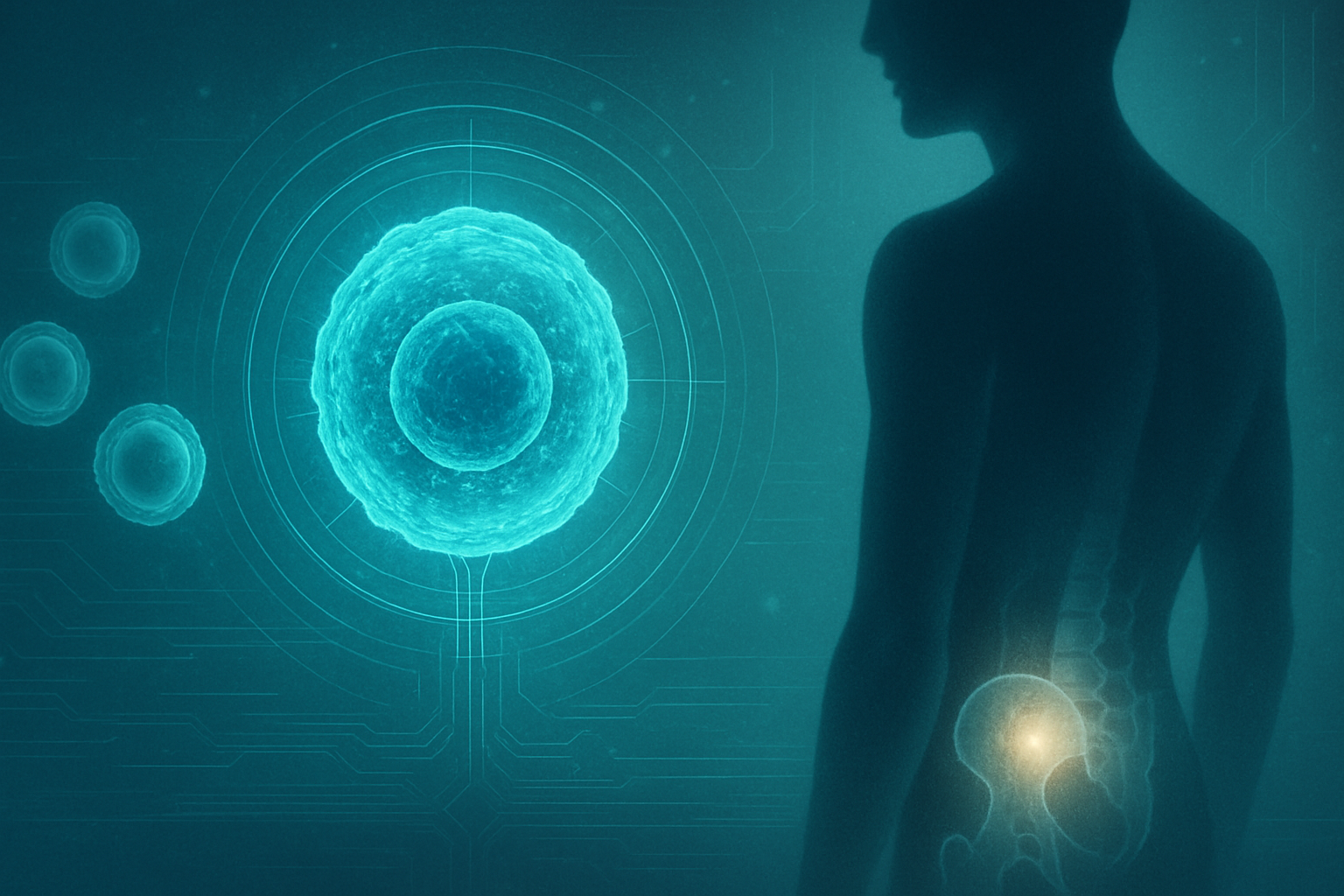
In the ever-evolving world of modern medicine, stem cell therapy has emerged as one of the most groundbreaking and promising treatments available today. While it might sound like something straight out of a science fiction novel, the truth is that stem cells are as real as the blood in your veins—and their potential to heal, regenerate, and transform the way we approach injury and disease is simply astonishing. To understand what stem cell therapy is, we must first explore what stem cells are and how they interact with the body’s natural repair systems. The Foundation of Stem Cell Science At its core, stem cell therapy is about utilizing the body’s raw materials—its master cells—to repair or replace damaged tissue. Stem cells are unique in that they have the potential to become many different types of cells in the body. Unlike other cells, they don’t serve a specific function initially. Instead, they can develop into specialized cells, whether those are muscle cells, brain cells, bone cells, or even blood cells. This incredible adaptability means that stem cells can serve as a kind of internal repair system. When directed in the right way, they can divide and create new, healthy cells that replace those lost to disease, injury, or age. This is the underlying principle behind stem cell therapy, which aims to take advantage of this regenerative power to treat a wide range of medical conditions. How Stem Cell Therapy Works Stem cell therapy typically involves harvesting stem cells from the patient’s own body or a donor source. Once collected, the cells are processed and then injected into the targeted area that requires healing. For example, someone suffering from a degenerative joint condition might receive stem cell injections directly into the affected joint, to promote tissue regeneration and reduce inflammation. The beauty of this approach lies in its personalization. Because many treatments use the patient’s cells, the risk of immune rejection is significantly reduced. The stem cells are placed in an environment where they are needed. Ideally, they begin to differentiate into the appropriate types of cells, aiding the repair and regrowth of damaged tissue. Conditions That Can Benefit from Stem Cell Therapy While stem cell therapy is still being researched and refined, it is already being used or studied in connection with a wide variety of health issues. Orthopedic conditions, such as osteoarthritis, tendon injuries, and spinal disc degeneration, are some of the most common targets for this type of treatment. The therapy is also being explored for its potential in treating autoimmune disorders, neurological conditions like Parkinson’s disease, and even heart disease. In the realm of cosmetic and anti-aging treatments, stem cell applications are also gaining popularity. Regenerative medicine clinics offer therapies aimed at skin rejuvenation, hair growth, and improved tissue elasticity—based on the same principles of cellular regeneration. Why Stem Cell Therapy Is Considered Revolutionary The excitement surrounding stem cell therapy isn’t just about the novelty—it’s about what it represents for the future of medicine. Traditional treatments often aim to manage symptoms or slow the progression of the disease. Stem cell therapy, on the other hand, seeks to reverse damage at a cellular level. This distinction is critical. Imagine a torn ligament being healed not with surgery and a long recovery, but through the injection of cells that can rebuild the tissue from the inside out. Think about degenerative diseases like multiple sclerosis being halted—or even reversed—by replacing the cells that have been lost. These are no longer just theories; they are real possibilities being investigated in clinical trials around the world. Misconceptions and the Reality of Results Despite the promise, it’s important to separate hype from reality. Stem cell therapy is not a miracle cure, and it doesn’t work the same way for every condition or every person. Results can vary, and much depends on the type of stem cells used, the way they’re delivered, and the condition being treated. That said, many patients report noticeable improvements in pain levels, mobility, and overall quality of life. The field is still developing, but the initial outcomes have been encouraging enough to warrant ongoing research and a growing list of approved applications in regenerative medicine. What Happens During a Typical Stem Cell Procedure A stem cell therapy session usually begins with a consultation and evaluation. If the patient is a good candidate, the medical team will determine the best source for stem cell collection. For autologous therapies (using the patient's cells), stem cells are often extracted from fat or bone marrow under local anesthesia. Once harvested, the cells are purified, processed, and sometimes enhanced with growth factors. They are then reinjected into the targeted site. The procedure is typically outpatient, meaning no overnight stay is required. Recovery time varies but is often significantly shorter than traditional surgery or invasive interventions. Stem Cell Therapy and the Future of Personalized Medicine One of the most exciting aspects of stem cell therapy is its alignment with the growing movement toward personalized medicine. Every human body is different, and stem cell treatments offer the potential to tailor solutions to individual biological responses. As research advances and techniques improve, we may see stem cell therapies not only becoming more widely available but also more precisely designed for each patient’s unique genetic makeup, injury history, and overall health profile. This is a level of care that generic pharmaceuticals or blanket treatment plans can’t achieve. Challenges That Still Lie Ahead While stem cell therapy has made incredible strides, challenges remain. Standardizing treatment protocols, ensuring consistent outcomes, and navigating complex regulatory environments are all issues the field continues to address. Public education is another hurdle, as many people still associate stem cells with misinformation or exaggerated claims. In addition, affordability and access remain real concerns. While prices are gradually becoming more manageable, stem cell therapy is still not covered by many insurance plans, placing it out of reach for some patients who could benefit the most. Stem cell therapy is redefining how we approach healing—by using the body’s regenerative power to restore damaged tissues, reduce inflammation, and improve overall function. While it's not a cure-all, the possibilities it offers are both exciting and transformative. As research continues to advance, more people are turning to this innovative approach for relief and recovery. At One Natural Health , we provide Stem Cell Therapy to help you heal naturally, safely, and effectively—empowering your body to do what it was designed to do: heal from within.
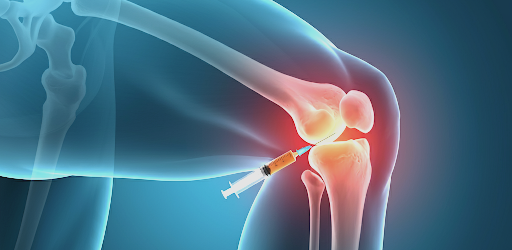
The topic of stem cell therapy safety sparks deep curiosity—and sometimes concern—among individuals exploring this groundbreaking medical option. With its promise to repair damaged tissues, reverse chronic conditions, and potentially even regenerate entire systems within the body, it’s no wonder this treatment is gaining such attention. But while excitement swells around the potential benefits, questions around its safety are equally important and deserve thoughtful answers. In this article, we’re going to take an honest, clear-sighted journey into stem cell therapy’s safety. Rather than focusing on hype or fear, we’ll break things down in a conversational, realistic way. By the end, you’ll have a much better sense of how safe this therapy is, what to expect, and whether it’s the right fit for your health journey. Understanding the Basics of Stem Cell Therapy Before we examine safety, it helps to understand what stem cell therapy is clearly. At its core, stem cell therapy involves using your body’s most primitive cells—stem cells—to stimulate healing in damaged or diseased areas. These cells are unique because they haven’t “decided” what they’re going to become yet. That flexibility allows them to transform into muscle, nerve, or tissue cells depending on the environment they’re introduced into. The stem cells may be taken from your own body—often from fat tissue or bone marrow. Once harvested, these cells are processed and injected into areas that need repair. Why People Are Turning to Stem Cell Therapy People aren’t just interested in stem cell therapy for minor aches. They're seeking it out for serious conditions like joint degeneration, autoimmune diseases, spinal injuries, and even neurological conditions. Part of the draw is that stem cell therapy is often non-surgical and minimally invasive. It appeals to those who want to avoid going under the knife, those who haven’t found relief through traditional medicine, and those who are drawn to innovation. But where there is innovation, there are also important safety questions. That’s why you must understand the whole picture—both the promise and the precautions. Safety Begins with the Source One of the most important factors in determining how safe stem cell therapy is depends on where the cells come from. Using your stem cells typically comes with fewer risks because your immune system recognizes them. This reduces the chance of rejection or inflammatory response. When cells come from donors, the risk of immune rejection is slightly higher, but not necessarily dangerous. The cells are screened and cleaned before use, and reputable clinics follow strict quality standards. Still, knowing where your stem cells are sourced from and how they are processed is a crucial part of evaluating any treatment plan. Not All Clinics Are Created Equal Here’s a hard truth: while stem cell therapy itself may be safe, not every place that offers it meets proper safety standards. Some clinics may cut corners, skip safety protocols, or use unverified products. This is where most risks arise—not from the therapy itself, but from poor execution. Choosing a clinic that’s reputable, experienced, and transparent with its methods makes a massive difference in the safety of your experience. Clinics that explain every step, source cells ethically, and provide support before and after treatment are far more likely to deliver positive outcomes. Side Effects Are Possible, But Often Mild Like any medical procedure, stem cell therapy comes with the possibility of side effects. Most of the time, these are mild and temporary things like swelling, soreness, or redness at the injection site. Some people feel fatigued or experience a low-grade fever for a day or two. These responses are typically just the body adjusting to the regenerative process. Serious side effects are extremely rare when proper protocols are followed. But it’s important to remember that every person’s body reacts differently, and results can vary depending on age, health condition, and the disease's severity. Is There a Risk of Tumor Formation? One of the concerns people often raise involves whether stem cells could form tumors. This is a valid question because stem cells, by nature, grow rapidly and can turn into different types of cells. However, this risk is mostly associated with embryonic stem cells, which are rarely used in modern clinical settings due to ethical and safety concerns. Most clinics today rely on adult stem cells, which have a very low likelihood of forming tumors. These cells are also often “pre-differentiated” or treated in ways that reduce the potential for uncontrolled growth. As long as cells are properly handled, the risk is considered extremely low. Personalized Risks vs. General Risks Just like with any medical treatment, your health profile affects the safety of stem cell therapy for you. Someone with a compromised immune system or a history of certain cancers may face different risks than someone who is generally healthy. That’s why a thorough consultation is so important. The best clinics will run tests, ask about your medical history, and help determine if this therapy is right for your specific situation. Safety Is More Than Just a Yes or No Question It’s tempting to ask: “Is it safe, yes or no?” But the answer isn’t that binary. Instead, think of safety as a spectrum, influenced by many factors: where the stem cells come from, how they’re processed, who administers them, and what your health looks like going in. When these elements are carefully considered and managed by qualified professionals, the therapy can be remarkably safe. So, is stem cell therapy safe? The honest answer is that it can be safe when handled with expertise and care. The real key lies in choosing the right provider, understanding the source and quality of the stem cells, and ensuring your treatment is tailored to your individual health needs. While no medical procedure is completely without risk, stem cell therapy, when performed responsibly, offers a promising and often life-changing option for many people. At One Natural Health , we are here to provide helpful information and treatment, guiding you through each step with clarity, safety, and compassion. If you’re considering this path, you deserve support that empowers you to make the best choice for your future.


